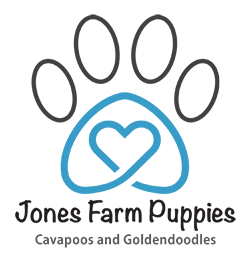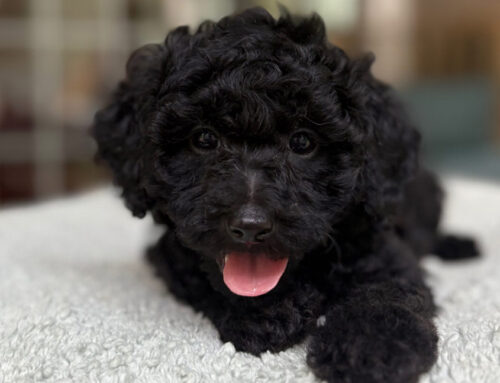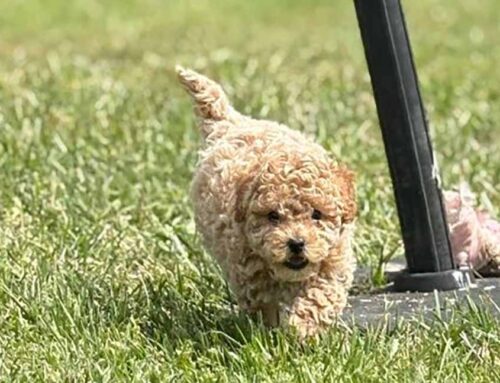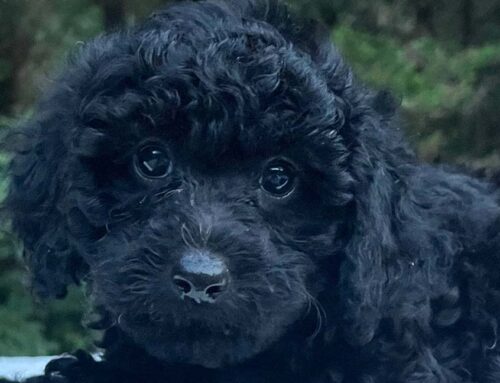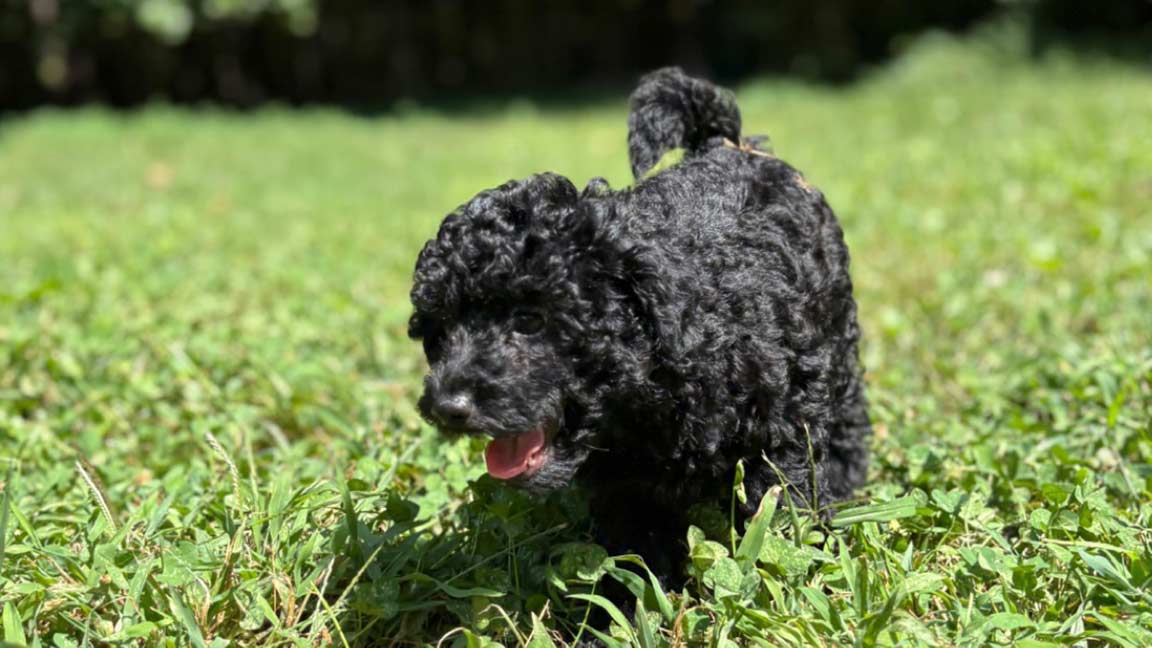
Why Do Dogs Wag Their Tails? It’s More Than Joy!
If you’ve ever come home to your puppy wagging their tail like a tiny windshield wiper, you know how heart-melting it feels. But have you ever wondered, “Why do dogs wag their tails?” While it often looks like pure happiness, tail wagging is actually a complex form of communication. Dogs use their tails to express emotions, intentions, and even to signal warnings. At Jones Farm Puppies, we believe in helping families understand their pup’s language so they can build even stronger bonds. Let’s dive into the fascinating reasons behind this behavior and answer the big question: Why do dogs wag their tails?
The Basics of Tail Wagging
When asking why dogs wag their tails, it’s important to remember that tails are like emotional antennas. The speed, direction, and height of the wag all carry different meanings. A wag isn’t always a sign of joy; sometimes it can mean nervousness, uncertainty, or even a polite hello.
Dogs learn to use their tails early in life. Puppies start wagging at just a few weeks old as a way to interact with their littermates and mother. At Jones Farm Puppies, we love seeing this early communication, as it’s a sign that puppies are developing social skills right from the start.
Different Wags, Different Meanings
So, why do dogs wag their tails in different ways? Let’s break down the main types of tail wags:
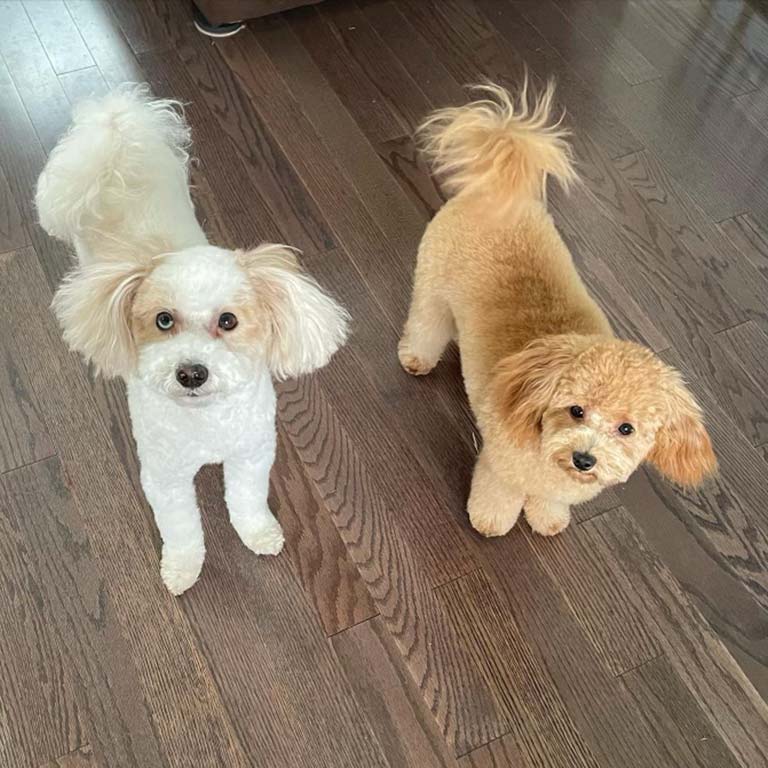
The Happy Wag
This is the wag everyone loves: broad, sweeping, and relaxed. It often comes with a wiggle of the whole backside. When you walk through the door and your pup’s tail is going full speed, the answer to why do dogs wag their tails is simple: they’re thrilled to see you.
The Nervous Wag
A slow, low wag can signal uncertainty. If you’re asking yourself why do dogs wag their tails in this way, it may mean they’re feeling cautious or anxious.
The Alert Wag
A stiff, high tail wag that moves side-to-side can be a warning. In this case, why do dogs wag their tails has less to do with joy and more to do with asserting confidence or protecting their space.
The Social Wag
Dogs also wag when greeting other dogs as a way of saying, “I come in peace.” Puppies at Jones Farm Puppies learn this early through gentle socialization, so they grow up knowing how to communicate politely with other pets.
Why Do Dogs Wag Their Tails to the Left or Right?
Believe it or not, even the direction of a wag tells a story. Research shows that when a dog wags more to the right, it usually signals positive feelings like excitement or friendliness. A wag leaning to the left may indicate stress or unease. So if you’ve ever wondered why do dogs wag their tails in a specific direction, it’s literally part of their body language.
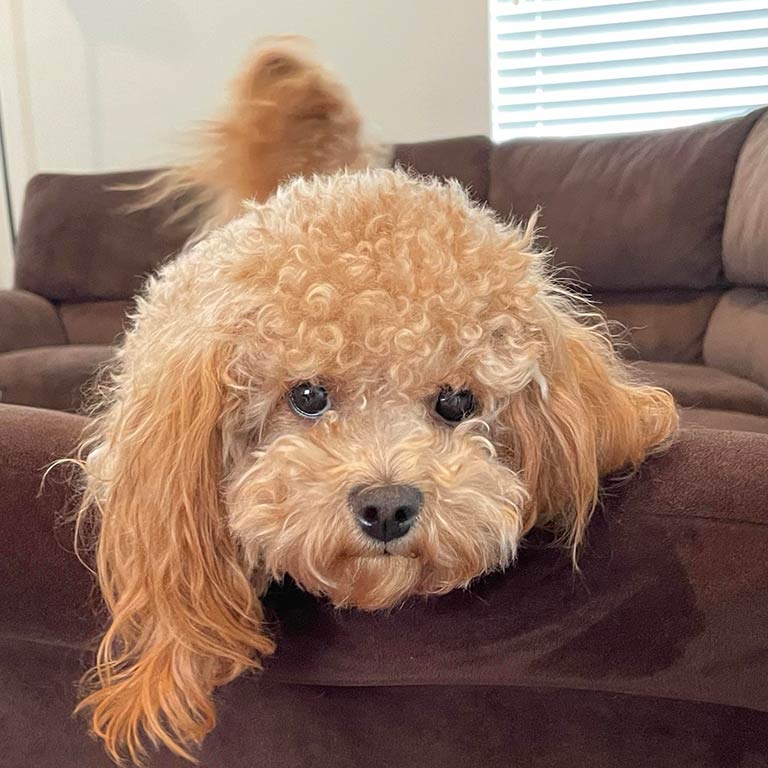
Health, Nutrition, and Tail Communication
Diet and overall health also play a role in how expressive your dog is. A healthy, well-nourished pup will be more active and communicative. That’s why at Jones Farm Puppie, we use PawTree’s natural formulas. These diets give our puppies balanced nutrition that supports strong muscles, shiny coats, and happy, wagging tails. Because let’s be honest, when you ask why do dogs wag their tails, the answer is always better when it comes from a healthy, thriving pup.
Preventing Stress That Affects Tail Wagging
Sometimes, why dogs wag their tails has less to do with excitement and more to do with stress. Anxiety, parasites, or even discomfort can influence how your dog uses their tail. That’s why prevention is so important. At Jones Farm Puppies, we take a natural approach to wellness, using all-natural prevention methods to protect our puppies. From natural supplements to all-natural heartworm prevention, we give our pups the healthiest start possible. A pup who feels good inside and out communicates more clearly and confidently.
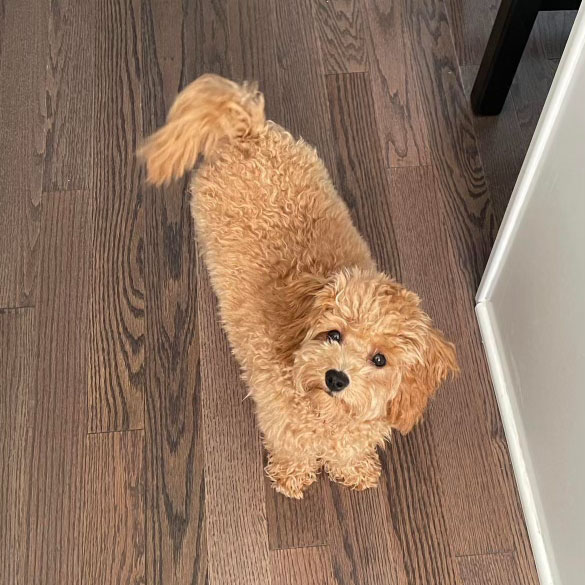
Building Bonds Through Tail Language
Understanding why dogs wag their tails helps you become a better pet parent. Once you start noticing the difference between happy, nervous, and alert wags, you’ll know exactly how to respond.
- A happy wag? Time to play or cuddle.
- A nervous wag? Offer reassurance and space.
- An alert wag? Stay calm and observe before engaging.
At Jones Farm Puppies, we raise our puppies with strong social foundations so families can easily understand their communication cues from day one.
Fun Facts About Dog Wagging
If you’re still curious about why dogs wag their tails, here are a few fun tidbits:
- Puppies don’t wag at birth; it usually starts around 3 to 4 weeks old.
- Some breeds are more expressive with their tails than others.
- Dogs without tails still “wag” by wiggling their entire back end!
- Tail wagging uses muscles that can actually get sore after extended play sessions.
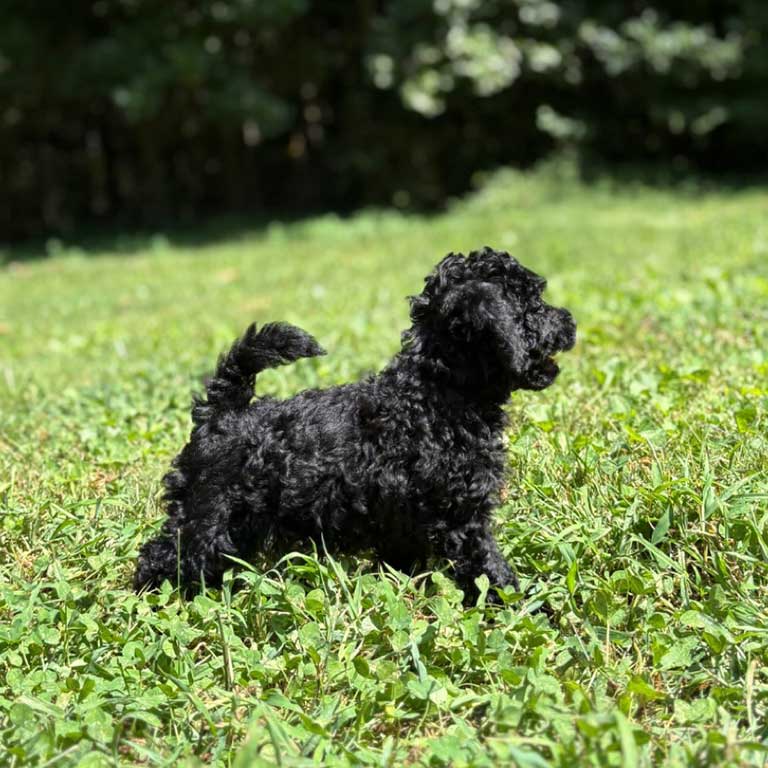
Final Thoughts
So, why do dogs wag their tails? The answer is much more than joy. Tails are powerful tools of communication, signaling everything from happiness to stress to social greetings. By paying attention to the speed, height, and direction of the wag, you’ll gain valuable insight into your pup’s emotions.
At Jones Farm Puppies, we’re dedicated to raising healthy, social puppies that wag with confidence. With the proper diet, natural prevention, and early socialization, your pup’s tail will become the perfect window into their heart. For more advice to keep your pup as healthy as possible, check out our blog posts.
FAQ
Why do dogs wag their tails when they see me?
When they’re excited and happy, the classic “whole body wag” is the ultimate welcome home.
Do all dogs wag their tails the same way?
No, breed, personality, and health all play a role. Some wag high and fast, while others wag low and slow.
Can a wagging tail mean my dog is scared?
Yes. A low, slow wag often signals nervousness. Understanding these differences is key to reading your pup.
Why do dogs wag their tails when meeting other dogs?
It’s their way of signaling intentions. A relaxed wag means friendliness, while a stiff wag may mean caution.
Do puppies wag their tails?
Yes! Puppies start wagging around a month old, and it’s one of their first ways of socializing.
